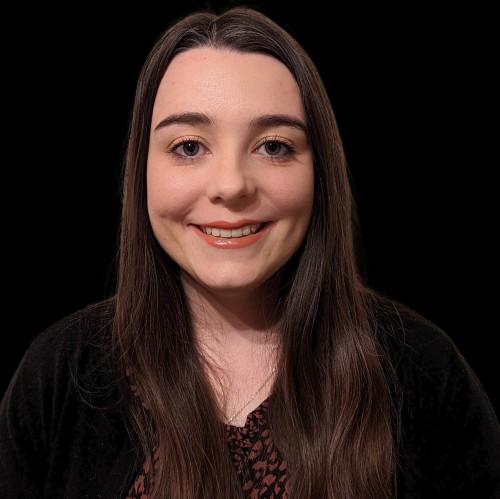Feature Requests: Collect and Prioritize Customer Requests
Feature Requests: Collect and Prioritize Customer Requests

Emily Rivers
Marketing & Product
Aug 29, 2024
7m
TL;DR: Feature requests are crucial for aligning your product with customer needs. These feature requests, which can include new features, improvements, or bug fixes, provide insights into how customers use your product and where it might fall short. Managing and prioritizing these requests involves centralizing them, engaging with your team, and communicating transparently with customers about their status. Prioritization can be guided by customer voting, business goals, and potential impact on growth. Tools like Productlane can streamline the process. Additionally, saying no to certain requests and promoting new features effectively is essential for maintaining customer satisfaction and engagement.
TABLE OF CONTENTS
Managing feature requests is crucial if you want to develop a product that customers truly want and need. Feature requests are one of the most important forms of communication with your customers as your brand grows and evolves, as customer feedback helps you make informed decisions about the changes you make to your product.
So what are feature requests and how do you manage them? We'll explore everything in this guide.
What is a feature request?
A feature request is when a user contacts a SaaS company to ask them to fix, improve or add a new feature to a product. The company can close the feedback loop by keeping customers informed about their feature request; they should let them know if their feature request is implemented or whether it is declined or put in a backlog.
Feature requests can include things like:
Bug identification
UI suggestions
Integration with other software
Completely new functionality
Feature requests often give you insight into how your customers use your product, which can sometimes differ from what your product team intended! When your product meets your customers' needs, they're more likely to stay loyal to your brand and tell other users about it. So, it's well worth collecting feature requests to help you understand your customers' unique requirements.
What should a feature request include?
Some brands use a feature request form to help streamline the feature request process. Using a feature request template to standardize the process can make it easier to gather user feedback and understand the most requested features.
When a customer requests a new feature, you can point them to your feature request form to help you gather more information. A good feature request includes information such as:
What the feature is, or should be if implemented
How the feature should work
Explanations of the problem the requested feature will solve
Scenarios of the requested feature in use
Productlane's feedback widget allows you to collect feature requests from directly within your product and lets users choose how high a priority their proposed feature is.
Benefits of feature requests
While it can seem like a lot of effort to collect feature requests and analyze user feedback, it's a great way to make product improvements based on customer needs. You'll get a much deeper understanding of what your customers want and how your product can solve their problems.
Customers who feel heard are much more likely to become loyal customers and recommend your brand to others, so collecting user feedback and feature requests is well worth the effort. Let's dive into some of the top benefits of feature requests:
Customer-centric development
Feature requests give you valuable insights into user needs. When you gather feature requests from your customers, you can understand how they use your product and where it falls short of their expectations.
By listening to your users, you can align your product roadmap with what they truly want, leading to higher customer satisfaction.
Better functionality
Customer feedback leads to new features, which should lead to better product functionality. Monitoring new feature requests allows you to identify areas where your product needs to be improved, helping to give you the edge over competitors and create a more useful product for customers.
Increased customer engagement
Inviting users to submit requests fosters a sense of community and involvement, making customers feel valued and heard. You could use a feedback board where customers can upvote the most important features to them, to help you prioritize feature requests based on customer feedback.
How to ask customers for feature requests
You can ask customers for feature requests in a similar way to how you ask for product feedback. You can use a variety of feedback channels, such as:
Email
Chatbots
In-app notifications
Contact forms
It's also a good idea to look through customer reviews. You'll notice that some users will leave direct feature requests within their reviews, while others may identify problems that can be solved with new features or bug fixes.
How to manage feature requests
Once you've started asking customers for feature requests, you'll need a robust way to manage them to stop them from becoming overwhelming. This is especially the case if you're using multiple channels to gather feature requests or you're interpreting customer reviews. Here are a few tips for managing feature requests:
Centralize your feature requests
It's a good idea to use a feedback hub that keeps all your feature requests in one place. There are lots of product management tools out there that can help you organize your requests - Productlane being one of them! Our customer feedback and support platform lets you collect feedback from calls, emails, and other sources and keep them in a centralized hub so you can close the feedback loop.
Use feedback and feature requests in your product development process
Make sure you discuss feature requests with your development and product teams to figure out the best way to proceed. Talk through whether you have the resources to deploy the feature, whether it should be prioritized over others, and how relevant the feature is to users - is it a 'nice to have' or a 'need to have' feature?
It's important to discuss feature requests with team members from support, sales, product and marketing to get a holistic view of how the feature will or won't benefit users. Customer requests are usually personal to that user, so it's worth bringing in the whole team to see how it relates to your wider user base.
Communicate feature request status to close the feedback loop
It's important that you acknowledge every feature request and be transparent about your feedback process so customers know what to expect. Whatever you decide to do with the request, you should respond to the customer to build a lasting relationship with them. This doesn't mean you need to action each request - you could reply with a support article or a workaround for the customer's problem.
Make sure you notify users of all feature requests you will proceed with by adding them to your public roadmap and detailing them in your release notes when complete.
Decide how you'll prioritize feature requests
Prioritizing feature requests is vital, otherwise you'll end up in a chaotic mess that's difficult to navigate. There are a few ways to prioritize requests, including:
Using feature voting: Feature voting is a customer-centric way to prioritize incoming requests. It helps you to get an idea of the features that are most important to your customers, and can help break deadlocks with stakeholders who may have differing opinions over priorities.
Considering product goals: Even if a product feature request is popular, if it doesn't fit with your business objectives and vision, it might not be high up on your list. Your goals should shape every decision you make regarding feature updates.
Understanding impact on business growth: Consider whether the feature will impact your company's revenue positively or negatively. If it's a simple feature that could bring in more revenue with little resource required, it's a no-brainer. If the new feature will cost a lot of money in resources, it might not be worth it.
Using a prioritization framework: A prioritization framework, like MOSCOW or KANO, can help you make product decisions based on certain criteria. Which one is right for you will depend on your product strategy, your goals and customer needs.
Publish new feature announcements to drive adoption of new features
Don't let your hard work go to waste. As well as including new feature requests in your public roadmap and release notes, create engaging announcements showcasing new features across your communication channels.
Use in-app notifications, product release emails and social media posts to highlight the benefits of new functionality and how it will benefit users. Make sure you tell customers that the feature was based on customer requests or bug reports to help you gain trust from your users that you listen to their feedback.
Productlane: A comprehensive feedback portal with a feature request tool
Productlane is an ideal way to manage feature requests. The number one feedback hub for Linear, you can gather all your feature requests from various channels and keep them in one place. Close the feedback loop by responding to users when their requests and product ideas are implemented, and allow customers to vote on incoming requests to help you prioritize development.
Get started with Productlane now.
FAQs on feature requests
You might also like


